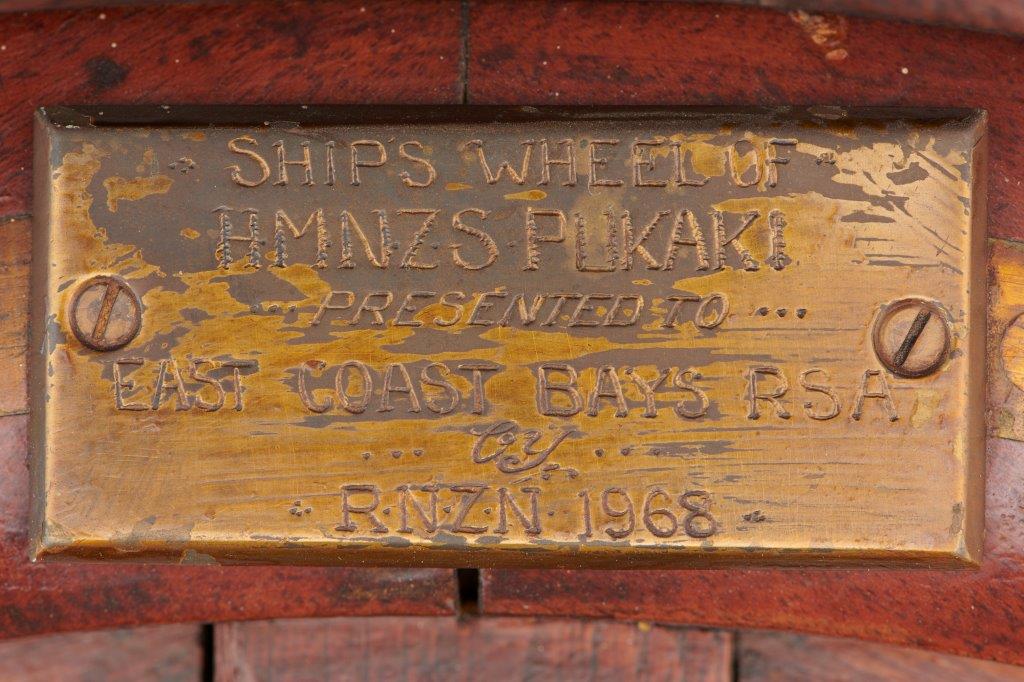In the last few months, the Collections Team have been busy processing some new acquisitions to the collection. Here is a selection of some of the items.
Tea Cosy Cover
Over decades of collecting the direction a museum takes with how and what they collect may change drastically. Donations that were accepted in the past may no longer meet the organisation’s mission statement or annual plans. When these changes in direction happen, some objects may go through a deaccession process; making room to store more relevant material. MOTAT recently went through deaccessioning some of their collection items and offered the Navy Museum a deaccessioned wartime souvenir, which we gladly gave a new home.
This tea cosy cover is a stunning example of wartime filet crochet. Filet crochet combines several basic crochet stitches to create a mesh of open and solid blocks that display a design. Filet patterns with such patriotic designs as the one above, were often printed in women’s magazines and newspaper supplements during World War One. This particular pattern was found by collections staff in a March 11th, 1916, edition of “Women’s Own” magazine. Patterns like this one could be used to create a large variety of household objects, including bedspreads, tray cloths, and tablecloths – or tea cosy covers.
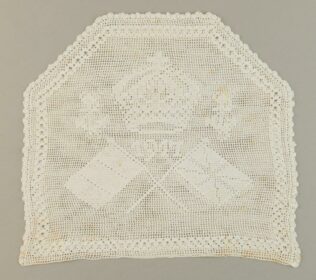
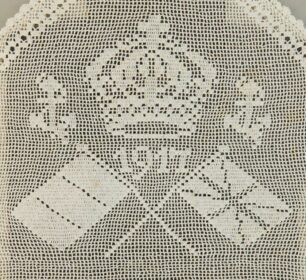
Dear Mickey
Every now and then a donation comes in that has an extremely heartfelt story attached. When Merle “Mickey” Lister passed away her family came across a series of 46 letters in her personal effects. These letters were from an Engine Room Artificer in the Royal Navy named Albert “Bert” Cox and revealed a love story that Merle had kept secret for nearly eighty years.
In September 1935 Merle and Albert met at a dance. Bert was in Auckland, posted to HMS Diomede, and Merle was down from her hometown of Whangarei for the weekend. So began nearly three years of correspondence, of which we have only Bert’s letters to Merle.
He sent letters from across the world – Picton, Australia, Singapore, Yemen, England, and finally China, where he was posted in 1937. Through his letters we gained great insight into his life at the time, and small snatches of Merle’s as he responds to her devoted correspondence. Sadly, this great love was not to be.
They had a near miss when Merle arrived in England less than a week after Bert sailed for China. They spoke often of plans for when Bert’s deployment came to an end. However, Bert passed away on the 21st of June 1938 of an unnamed illness while still posted to China, never having met up with his beloved Mickey again.
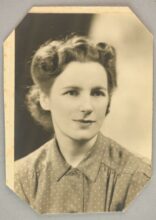
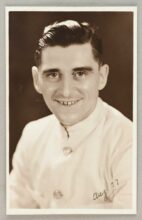
Bell
This Bell was donated to the Navy Museum after the building it had been mounted in, the Auckland Guide Boating Centre in Westhaven, was closed in 2016. The bell had been there well before 1988, (the year the donor started working at the centre) but has a much older history, dating back to the Second World War.
The bell had originally been used aboard the Fairmile 403 Motor Launch in the 1940s; you can still see, on the side of the bell, its official vessel number: HMML 403 [His Majesty’s Motor Launch 403]. Between 1942 and 1943 Fairmile B class patrol craft were constructed to assist with the war effort, completing duties such as anti-submarine patrols and acting as escort support. ML 403, built by Charles Bailey in Auckland was commissioned into the RNZN in October 1943. Soon after it was commissioned, in November of the same year, ML 403 and two other Motor Launches were involved in a suspected submarine sighting off the coast of Cape Campbell. In 1944 ML 403 joined a flotilla deployed to the Solomon Islands, completing convoy escort duties. The vessel went on to perform wartime service in Norfolk Island and New Caledonia. In 1947 the boat was converted to a pleasure launch and was then used as a part of the ferry service between Auckland, Rangitoto and Waiheke.
The launch was eventually sold in 1992 to a private individual for $140,000, who was captivated by its “antique” appearance. He sailed it on the 6000 nautical mile journey back to his home country of Singapore.
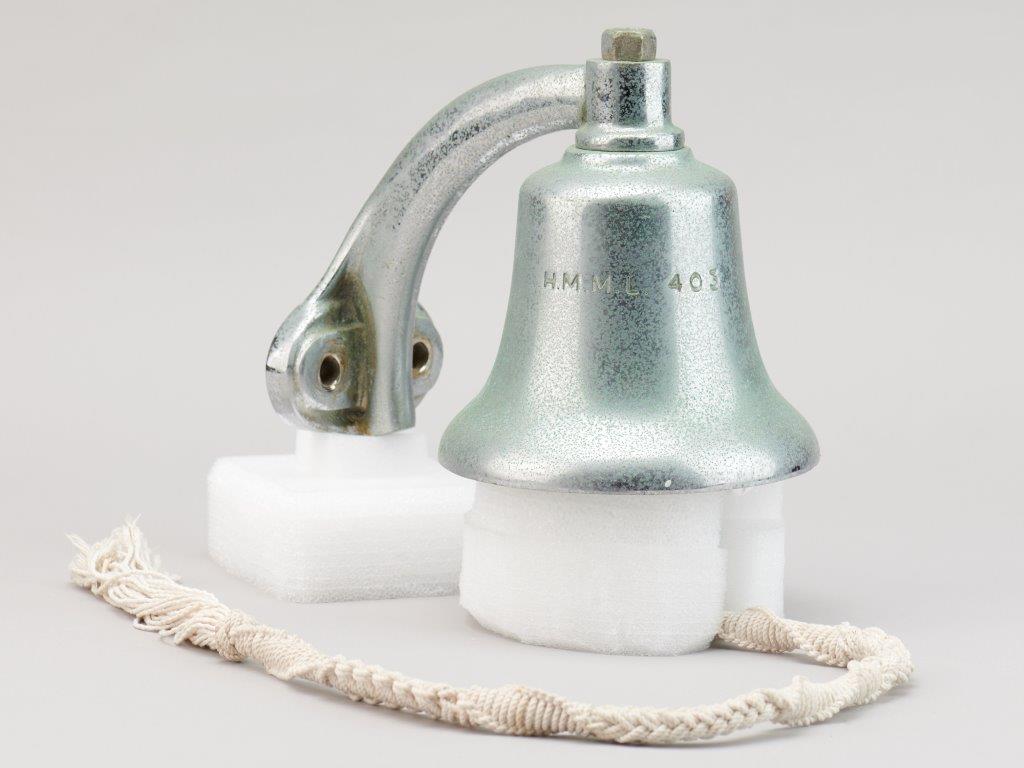
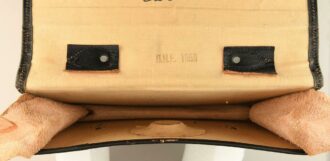
Document Satchel
This lockable Document satchel was used for “Safe Hand” transfer of classified documents by the Security Leadership team.
Donated to the Museum by the Navy’s Security Guard Force this satchel was used in the 1980s to securely move and deliver paper items of importance. The ‘Safe Hand’ method involves an authorised officer, or officers, personally carrying information with protective markings and identification number.
A rigorous audit trail is established making sure sensitive information is received by the correct people.
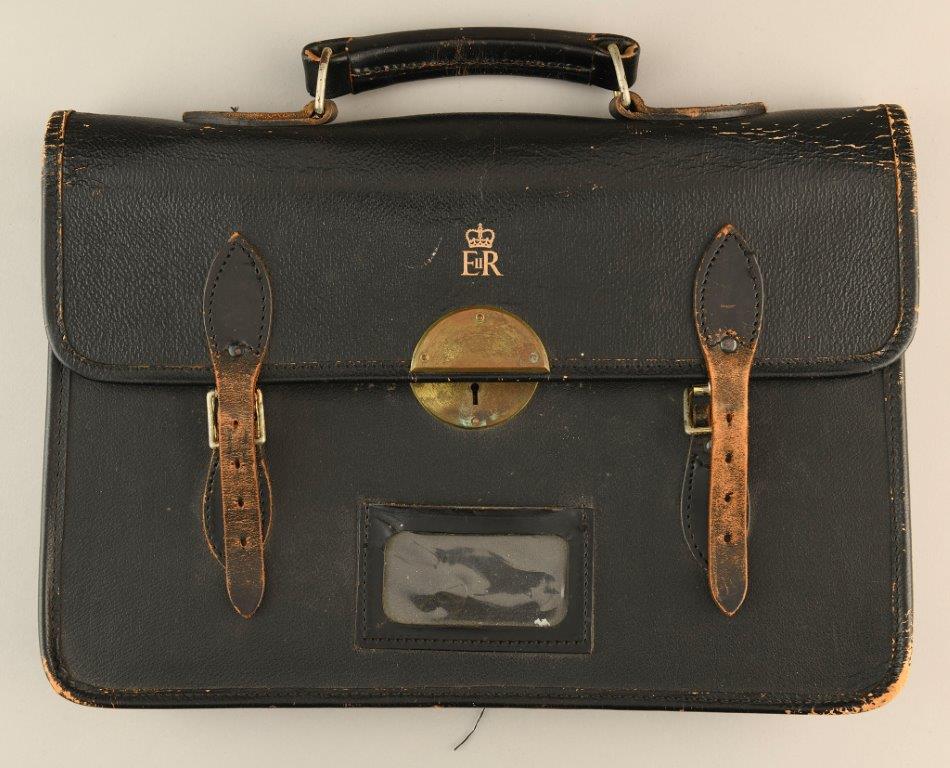
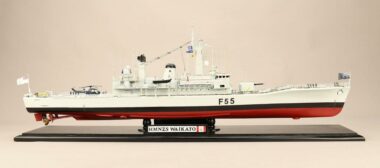

Model Ship
This model of HMNZS Waikato (F55), constructed by Mr Graham Beeson, measures 1.26 metres long and 0.43 metres tall. The full sized HMNZS Waikato was commissioned into the RNZN in 1965 and fitted with weapon systems which were at the forefront of technology at the time. The ship was also equipped with a Wasp Helicopter, which you can see on the rear deck of the model, making it the first ship to have an aircraft since 1942. The Wasp’s main purpose was to launch anti-submarine torpedoes but also performed reconnaissance and airlifted stores and personnel.
The ship was first deployed in 1967 to the Commonwealth Strategic Reserve in Singapore, followed with a deployment to the Far East in 1969. After this the ship performed Royal Yacht escort duties into the 1970s, and whilst doing so tragically, a crew member died after being washed overboard.
After performing a myriad of other service activities Waikato was eventually decommissioned in 1998. The hulk was sold to become an artificial reef off the northland coast.
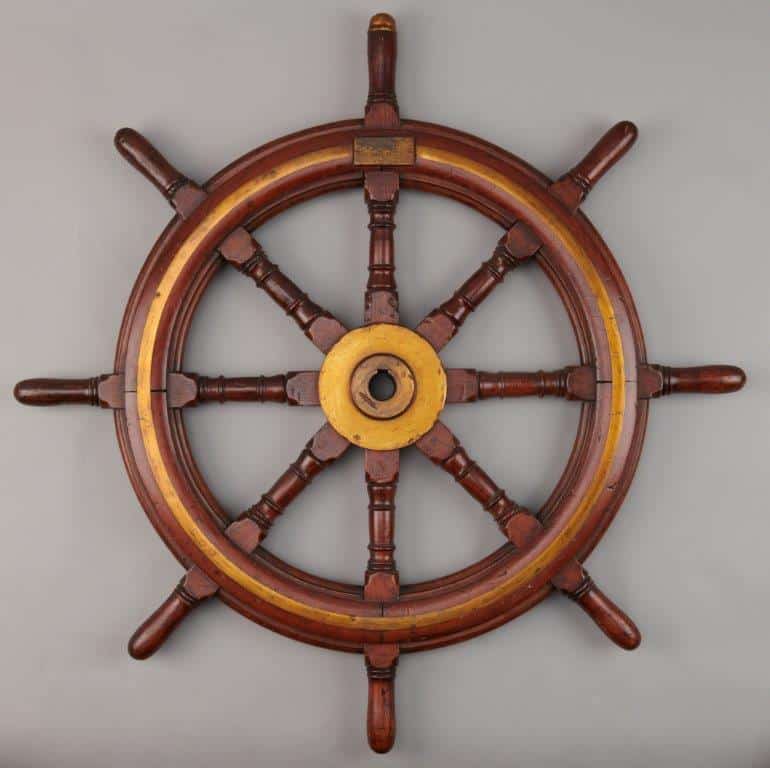
Ship’s Wheel
A ship’s wheel, made out of wood and bronze with a diameter of 930mm, which was originally from HMNZS Pukaki (F424). Pukaki, commissioned in 1948, was a Loch-class anti-submarine frigate which originally served in the North Atlantic escorting convoys on their way to Britain. In 1950 the ship was sent to support United Nations naval forces, after the outbreak of the Korean War, and in 1953 became the first ship to operate as part of the Far East Station – operating from Hong Kong and Singapore, and monitoring the Korean armistice. Pukaki was also involved in escorting HMNZS Endeavour to Antarctica in 1956 and was deployed as a weather ship for Operation Grapple from 1957 to 1958.
After the ship was decommissioned in 1965, the wheel had a plaque added (which you can see in the photo below) and was presented to the East Coast Bays RSA. The RSA donated to the wheel to the museum in 2018 when their building was sold.
